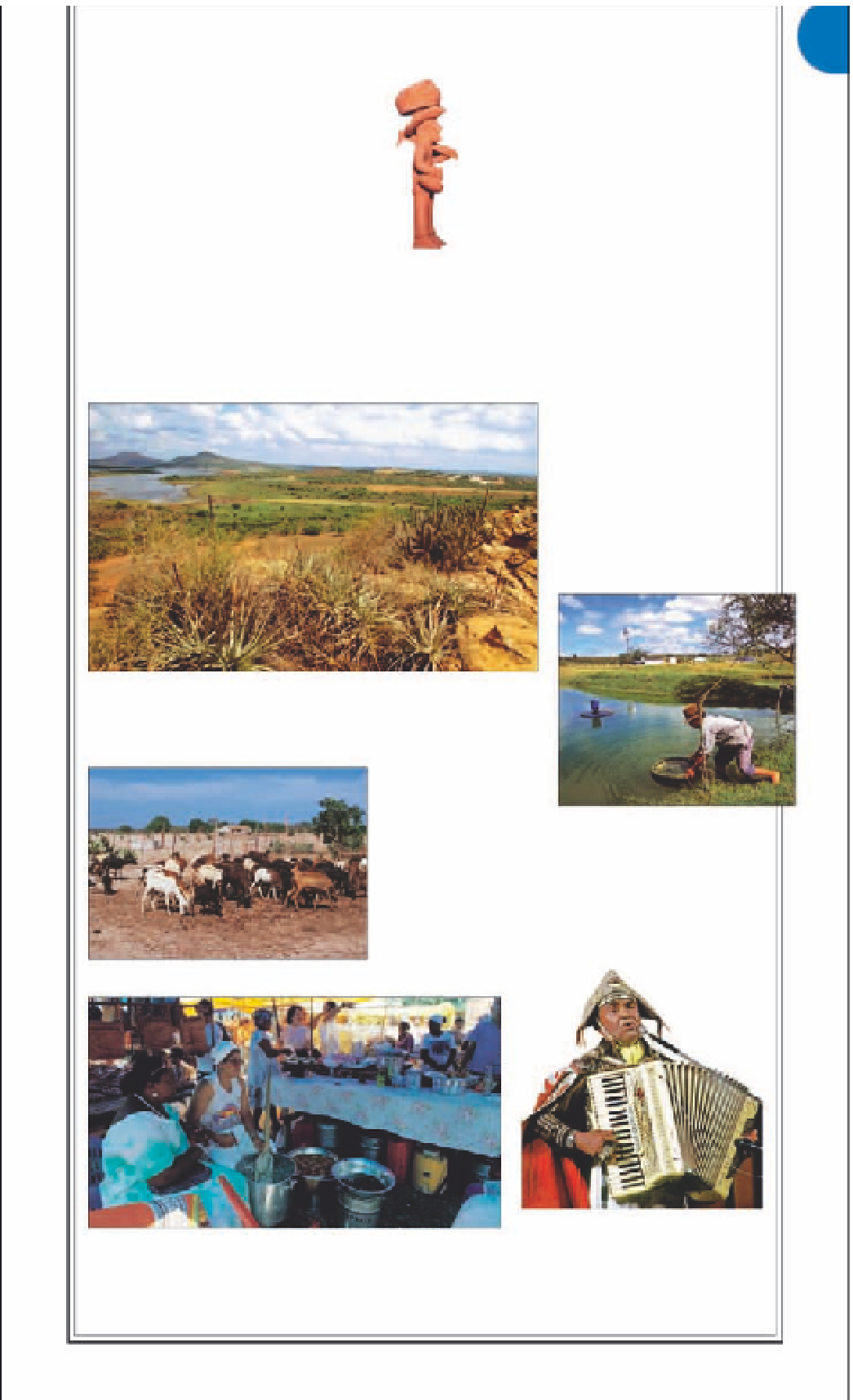Travel Reference
In-Depth Information
The Sertão
The
sertão
is a geographic region
that encompasses almost half the
territory of the Northeast. Aridity
is its single most important charac-
teristic. Rainfall is sparse, and the
vegetation is primarily
caatinga,
which consists of small trees and
bushes. Agriculture is difficult
in the
sertão
, which makes it
one of Brazil's poorest regions.
Traditionally,
sertanejos
have made a
living herding goats or cattle. One of
the country's original cowboy regions,
the
sertão
has also seen the largest
outflow of people in Brazil. Hard
climatic conditions forced
en masse
immigrations either to the coast,
or to the big cities such as São
Paulo and Rio de Janeiro. Not just
the dislocated northeasterners, or
nordestinos
, but all Brazilians
have an affinity for the
sertão
way of life. While
forró
music
is loved throughout the country,
Brazil's popular culture abounds with
sertanejo
stories and images.
Clay figurine
of a
nordestino
After a sudden rain
, the dry
land will turn green and
lush for a short period.
Palma cactus
is often the only food
available to livestock. The tough,
chewy leaves are ground into a
paste and used as cattle feed.
Caatinga
, the vegetation growing in this arid landscape, consists
of cacti, bromeliads, and scrubby trees and bushes. These plant
species are suitable to the challenging conditions of the
sertão
.
The goat
is the most
important livestock
in the
sertão
. More
adaptable than other
animals, it thrives
in the dry and hot
conditions. It is an
important source
of meat, milk,
and leather.
Rio São Francisco
is one of
the main water sources in
the
sertão
. Large irrigation
projects are using the water
to make agriculture possible.
Many areas in Pernambuco
grow fruits and vegetables.
Luiz Gonzaga
(1912-89), Brazil's
most famous “Son of the
Sertão,
”
was a
forró
musician. Most of his
songs celebrated or lamented the
life of those living in the
sertão.
Nordestino markets
are where homesick communities of
migrants from the Northeast meet, listen to
forró
, and eat
some of their favorite foods. São Paulo and Rio de Janeiro
have the largest
sertanejo
immigrant communities.
Aerial view of a palm-lined beach resort in Natal

































